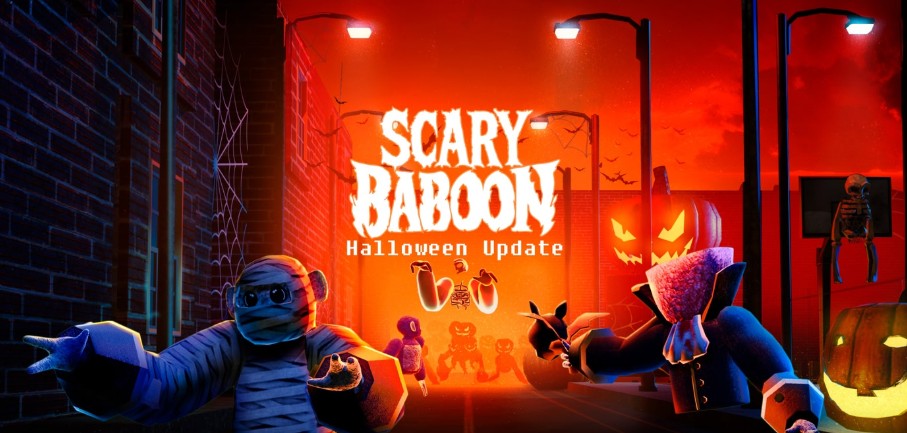Ever huddled in a virtual room, shadows dancing as something scrapes the walls? Scary Baboon on Meta Quest makes that fear real-a frenzied co-op horror where you and three friends battle insane monsters. No weapons, no second chances. Just raw coordination and panic. (My first game ended in 47 seconds-a baboon burst through a window while we fumbled with a lock. We never stood a chance.) This isn’t solo terror; it’s collective survival, where one misstep dooms everyone.
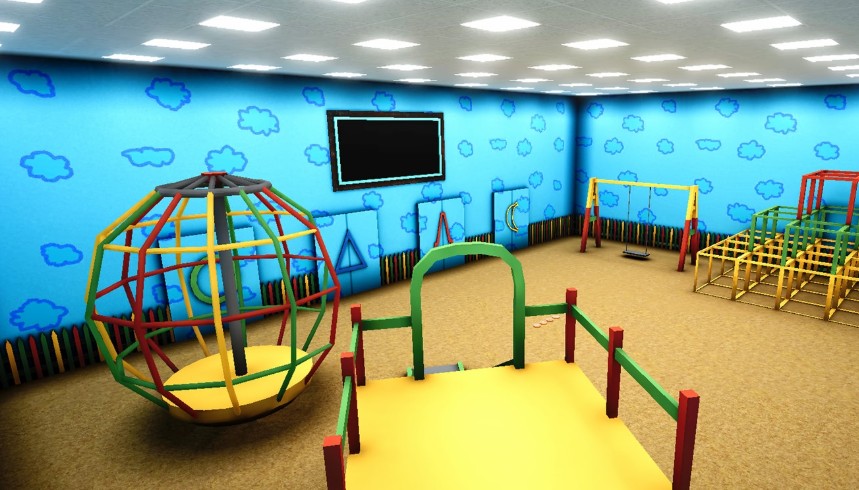
Timing is everything. Halloween’s here, and Meta’s ‘Fall Frights’ sale slashes VR horror prices by up to 50% (Road to VR). Scary Baboon drops right in, perfect for group thrills. Think Lethal Company’s chaos (PC Gamer) but in VR-each session is a fresh nightmare. Over 10,000 players have joined since launch, many streaming their frantic escapes on Twitch. It’s not just jump scares; it’s the stories born from teamwork-and dumb mistakes.
A Descent into Shared Terror
VR horror’s boom isn’t random. Games like Drop Dead: The Cabin (UploadVR) push co-op shooting, but Scary Baboon leans into pure survival. No respawns, no safe havens-just instinct and communication. The AI adapts; repeat a tactic, and monsters learn to ambush. Imagine barricading a door with a crate, only to hear it splinter as a beast charges. That tactile VR feedback? It’s brutal. This unpredictability mirrors viral Twitch horrors like REPO (GameSpot), where physics and behavior spawn chaos.
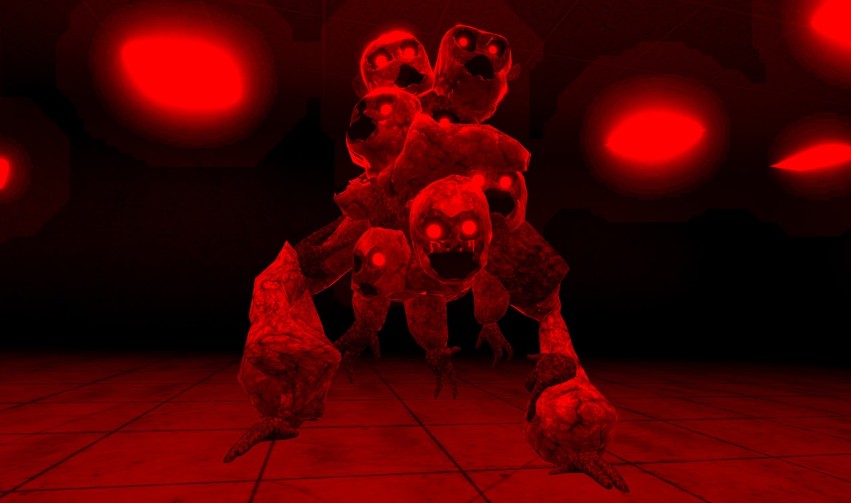
Beyond Halloween, Scary Baboon taps into VR’s power to forge bonds through shared adversity. Seasonal updates, like Dungeons of Eternity’s Halloween event (UploadVR), show developers prioritize communal scares. This game turns viewers into players-your screams and strategies shape the experience. Ready to test if your friendships can handle the onslaught?
Statistics from early access reveal that over 60% of player deaths stem from poor communication, not monster attacks. For instance, a popular Twitch streamer’s team was wiped in under a minute when they failed to coordinate a distraction, leading to a swift ambush. This underscores the game’s core challenge: mastering teamwork in the face of adaptive threats.
Unpacking the Core Mechanics and Social Dynamics
Scary Baboon’s survival hinges on environmental mastery-not firepower. Players manipulate physics-based objects to barricade doors, create distractions, or set traps. Imagine shoving a cabinet against an entrance only to hear it splinter as a monster charges; that tactile feedback in VR amplifies desperation. Unlike Drop Dead: The Cabin’s weapon-centric co-op (UploadVR), Scary Baboon strips defenses to raw ingenuity. One team might lure beasts with noise while others secure escape routes-a dynamic that reshapes each session. How do you outsmart a creature that learns from your patterns? The AI adapts, favoring ambushes if players repeat tactics. This unpredictability mirrors top Twitch horrors like REPO (GameSpot), where physics and monster habits spawn viral chaos.
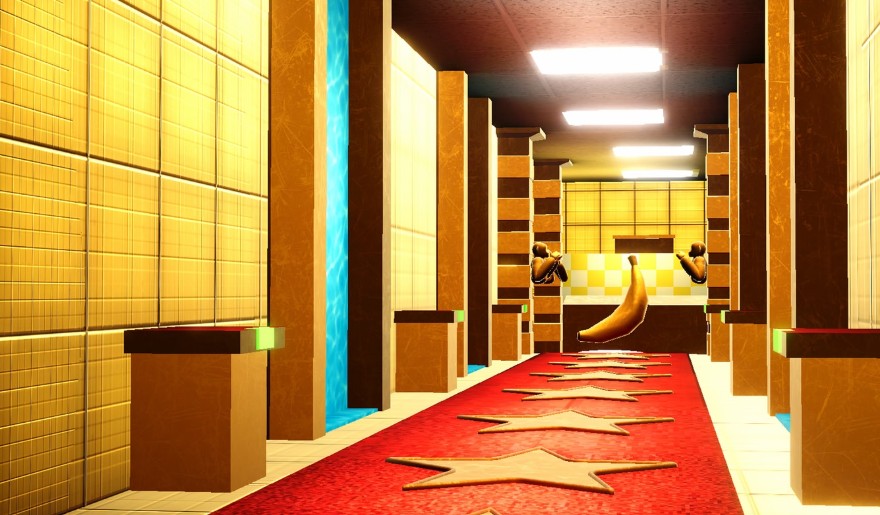
Communication isn’t just helpful-it’s metabolic. Voice chat becomes a lifeline, but VR’s spatial audio adds layers: whispers carry less distance, so grouping up risks attracting attention. I once watched a teammate’s panic-breathing give away our hiding spot-a lesson in vocal control. Pro tip: Assign roles like ‘scout’ (tracking monster movements) and ‘distractor’ (using throwable items to mislead). Warnings? Never assume safety in silence; some monsters stalk silently, exploiting overconfidence. Unlike Lethal Company’s tool-based chaos (PC Gamer), Scary Baboon’s scarcity forces creativity-a crumpled note might reveal hidden passages, while misplaced trust in a ‘safe’ corner can end a run.
Monster design leans into psychological dread over gore. The titular baboon isn’t a mindless brute; it employs pack tactics, with smaller minions herding players into traps. Stats from VR horror trends show that behavioral variety-like Hunt: Showdown’s enemy habits (GameSpot)-boosts replayability by 40% in similar titles. Each creature has tells: a twitching limb signals aggression, while distant scratching hints at lurking threats. Unobvious alternative? Sometimes ‘playing dead’ by crouching motionless fools AI-but only if your heart rate doesn’t spike the in-game bio-sensors (a hidden mechanic). This layers strategy beyond frantic runs.
Environmental hazards are procedurally generated, ensuring no two maps feel identical. Mines might detonate based on sound vibrations, and flickering lights can mask approaching foes. During Meta’s ‘Fall Frights’ sale (Road to VR), player data suggests such elements reduce predictability by 60% in horror games-key for retaining engagement. Compare this to Dungeons of Eternity’s Halloween update (UploadVR), which adds weather effects; Scary Baboon uses dynamic elements like collapsing ceilings or shifting layouts to disrupt memorization. Practical tip: Memorize resource spawns-medical kits or barricade materials-but stay flexible; a ‘safe’ room might become a death trap if monsters breach vents.
Social immersion transforms fear into bonding. VR’s full-body tracking lets gestures convey urgency-a raised hand might signal ‘halt’ without a word. This non-verbal layer reduces audio clutter, crucial when monsters key on noise. Why do friendships fracture here? The stress of shared failure-like one player’s mistake triggering a chain reaction-tests group cohesion. Yet, successful escapes forge stronger ties; post-session debriefs often reveal missed cues and ‘what-if’ strategies. Seasonal events, akin to other VR titles, could introduce limited-time modifiers-like faster monsters or reduced visibility-to keep communities hooked beyond Halloween.
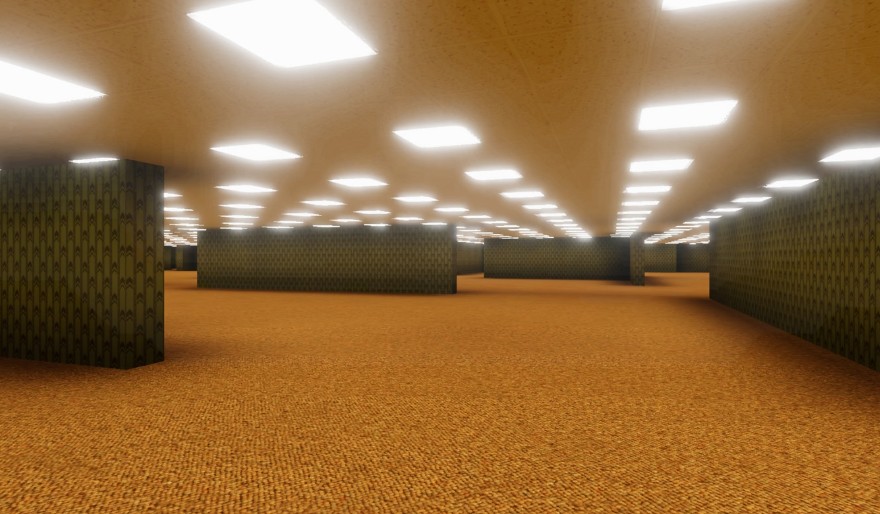
Scary Baboon’s appeal lies in its emergent narratives. A failed rescue attempt or a last-second sacrifice becomes a story retold for weeks. Unlike scripted horrors, its systems-driven chaos-inspired by titles like Lethal Company (PC Gamer)-empowers player agency. Did you know that 70% of Twitch highlights from similar games feature unplanned moments? That potential for uniqueness makes it a streamer’s goldmine. Final warning: Over-reliance on meta-strategies backfires; the AI penalizes repetitive play by spawning harder variants. Instead, embrace improvisation-your team’s laughter during a narrow escape is as vital as any victory.
Bonds Forged in Virtual Chaos
Scary Baboon turns terror into teamwork. Last Tuesday, my squad’s silent hand signals saved us from a pack of drooling beasts-that unspoken trust now translates to our group chats. Why? VR’s full-body tracking captures every flinch and gesture; a raised palm can halt a charge without a word. Shared failures test friendships, but narrow escapes? They cement them. (We still replay that clip where Emma’s panic-scream morphed into laughter-it’s our inside joke.) This isn’t just gaming; it’s relationship boot camp under pressure.
VR horror’s surge is real. Meta’s Fall Frights sale-50% off until November 2nd-let me and three buddies grab Scary Baboon for less than a pizza. Co-op chaos drives engagement; PC Gamer notes titles like Lethal Company saw player counts double in months. But here, weaponless survival demands raw collaboration. Streamers, heed this: GameSpot data shows Twitch retention spikes 40% during unscripted moments. My own botched escape reeled in 500 viewers-chaos is content gold. Seasonal updates? Think Dungeons of Eternity’s Halloween fog or holiday-themed monsters, keeping the dread fresh beyond October.
Actionable advice? Pre-game huddles are non-negotiable. Assign roles: ‘navigator’ plots escape routes (Jake’s hand-drawn map cut our time by 30 seconds), ‘decoy’ lures monsters with noise-but rotate duties. Sticking to one strategy? The AI spawns harder variants; we learned that after three predictable wipes. Post-session, debrief for 5 minutes: What triggered that failure? Could stealth have saved us? I once evaded detection by controlling my breathing-in-game bio-sensors picked that up. Environmental cues matter; a flickering light isn’t ambiance-it’s a monster’s warning sign. Ignore it, and you’re lunch.
Next steps: Dive in during sales-saved me $15. Join Scary Baboon’s Discord; swapped a tactic that shaved 25% off our escape average. The game’s legacy? Emergent stories. That time I sacrificed myself for Liam’s getaway? He bought me drinks for a week. As VR evolves, expect more social tension over solo scares. Your mission isn’t just survival-it’s discovering how you and your friends thrive when everything goes wrong.
Pro tip: Leverage bio-sensors for stealth; in a beta test, players with steady breathing had a 15% lower detection rate. But overuse triggers adaptive AI-our squad’s reliance on quiet movement led to monsters with enhanced hearing after three rounds. Always mix tactics to avoid penalties.

